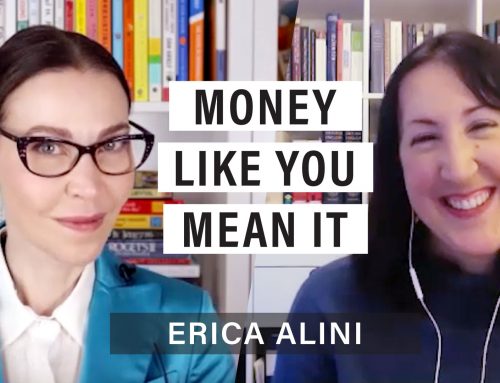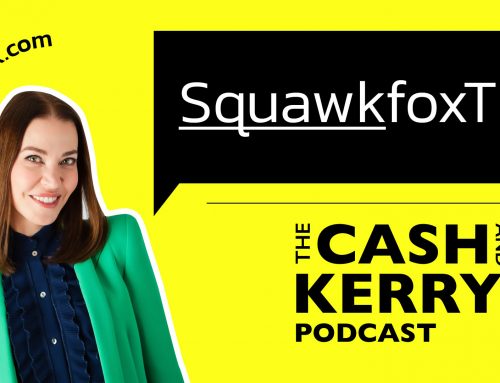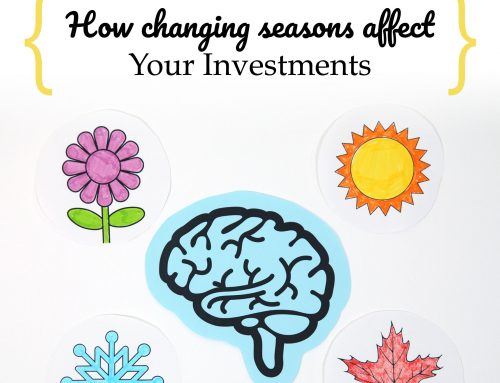I dunno.
The answer depends on you income today, and what you expect your income to be at retirement. Clear, right? I thought so. Because the variables of retirement savings are many and the path is anything but clairvoyant, CBC’s The Exchange asked me to make the complex-variable-retirement-equation simple in around five minutes, or a little less. Hey, I tried!
So check out my Squawky self doing my best retirement mathy mathy (using very little actual math) along with some super smart help from host Bruce Sellery.
Where @brucesellery and I discuss RRSPs, TFSAs, and "grow-ops" on the @ExchangeCBC. I can't make this up. https://t.co/IdKI53HDxy
— Kerry K. Taylor (@squawkfox) February 20, 2016
TFSAs and RRSPs. Where to start?
Start by knowing the difference between the plans. I’m giving you the basics — the stuff I squawked about on The Exchange.
The Registered Retirement Savings Plan (RRSP) and Tax-Free Savings Account (TFSA) are both containers, if you like, for growing your savings tax-sheltered. Theses accounts can both hold a variety of investments — ETFs, index funds, GICs, mutual funds (watch those fees!), stocks, bonds, etc. Both accounts are fantastic, so I’m not picking favourites! But these containers are mirror images of each other.
The RRSP: Where you contribute pre-tax dollars.
When you contribute to an RRSP you get to deduct that amount from your taxable income, and depending on your tax bracket, you’ll get a tax refund. Inside the plan your savings grow tax-free, but when you withdraw money you’ll pay tax. RRSPs defer your tax! So don’t look at your RRSP as all your money because the government gets a chunk later on.
There’s no age limit for starting, so if you have income you can contribute up to 18% to a maximum $24,930 for 2015. Well, unless you’re 71 years young — there are special RRSP rules for you. Deadline for contributing is February 29th, 2016. And don’t spend your tax refund!
The TFSA: Where you contribute after-tax dollars.
You don’t get a deduction for your TFSA contribution so no tax refund! But once the money is in the plan, it not only grows tax-free, but also comes out tax-free. Everything in there is yours to keep. You must be 18 years old or older to contribute. If you were 18 or older in 2009 (when the plan started) then the total amount you can contribute is $46,500 in 2016. Are you maxed out?
Great, so TFSA or RRSP?
The easy answer comes down to basic math and knowing your tax rate today and your tax rate when you retire (or when you withdraw the funds).
Rough RRSP vs. TFSA Guidelines:
- If you think your income (and therefore your tax rate) will be greater now than you expect it to be during retirement, go with the RRSP.
- If you think your tax rate will be lower at the time of contribution than at the time of withdrawal, the TFSA wins.
- If you think your income will be the same today as in the future, it’s a wash!
Easy, right? Just predict your future and guess your marginal tax rate at the time of withdrawal and base your decision on a hunch and hope the government doesn’t change the rules and and and … CRIES!
Rules for those who can’t predict the future:
Who benefits most from an RRSP?
- Employer Match: Have an employer with an RRSP contribution matching program? Hello free money! Use this very generous benefit and take the match by contributing to your RRSP.
- Reduce your taxable income: If you make over 40K per year it’s a good idea to reduce your taxable income by contributing to your RRSP. The lower your tax bracket, the less tax you’ll pay today.
- Steady income in retirement: An RRSP is basically a self-funded pension plan.
- Protect the money from yourself: It’s hard to withdraw cash from an RRSP. So if you’re the type to see it and spend it, then using a bit of “Behavioral Science” by moving the money into a safe spot is a good idea.
An RRSP Example:
Income: $60,000 in 2015
RRSP Contribution: $10,800 (18%)
Refund: $3,364
Bottom Line: At a 30% marginal tax rate, you reduce taxes from $11,686 to $8,322, for a savings of $3,364.
Who benefits most from a TFSA?
- Everyone: It’s a Totally Fabulous Savings Account! Saving more is always better.
- Low income Canucks: Those with low incomes today who expect to be in a low tax bracket at retirement are often better off saving in a TFSA. This is because withdrawals from either an RRSP or RRIF are considered income, and greater income in retirement can reduce your access to the Guaranteed Income Supplement (GIS) and to Old Age Security (OAS).
- Defined Benefit Pension Plan: Have a pension? Your income now and in retirement will likely be close to the same tax bracket.
- Young with low income: If you are in a low tax bracket, you get less benefit from the tax-saving benefit of an RRSP contribution. But if you save the RRSP contribution room until you’re earning more, the tax reduction can pay off later. TFSAs are a good place to save during your student days or early years of employment.
- Close to retirement: If you’re 71, the rules say you cannot contribute to an RRSP. So use your TFSA!
- Contributed RRSP maximum: Wow, you’re a superstar, so use your tax refund to fund your TFSA.
RRSP and TFSA Takeaways
- Saving money in either account is better than not saving in any account — take advantage of the tax free growth. Don’t overthink it and do nothing.
- If you save with an RRSP don’t spend your tax refund! Reinvest it! Pay down debt. Don’t squander the benefit of getting your tax break early.
- If you save with a TFSA don’t spend your TFSA! Save your money and let it compound.
- Saving more is better. So do both. Put your tax refund in your TFSA. Greedy, I know. Happy saving.
Hope you liked the video!
Love love love,
Kerry







you’ve missed one big point.
in an RRSP, the government is your investment partner, in more ways than one. not only is the money coming out of the RRSP considered income, and thus potentially reduce your CPP and OAS, but your DIVIDENDS and CAPITAL GAINS have become 100% TAXABLE!!
outside and RRSP, dividends and capital gains are treated better. you get a dividend tax credit, and capital gains are only taxed at half the rate.
think about this….
you invest in an rrsp, and over the life, say 30 years, you make $500,000 in capital gains. well… when that comes out, you’re paying tax on ALL that gain. outside the rrsp, only HALF is taxable.
what about dividends? say you have that $500,000 and invest it to produce dividends. at 5%, that generated $25,000 in dividends per year, and in ontario, that is basically tax free because of the dividend tax credit. if you were to do that inside your rrsp, that $25,000 is 100% taxed.
stop investing in RRSPs. they are no longer viable.
@nestor “DIVIDENDS and CAPITAL GAINS have become 100% TAXABLE!!”
No, they don’t. Think of the government’s portion of your RRSP and your portion of the RRSP — the government’s portion of your RRSP grows at the same rate, and when the money comes out, it’s just that that’s getting taxed. Your portion grows tax-free, and only gets taxed if you end up in a higher tax bracket than when you contributed.
See: http://www.michaeljamesonmoney.com/2014/03/debunking-rrsp-myths-with-pictures.html
This is an ongoing debate among my inner circle. If the TFSA gets bigger, it will be for sure the better option but that is years in the future. Right now, I say TFSA is my choice but it is hard to break tradition, RRSP is old faithful, everyone likes to get a refund cheque.
i’m sorry. the example on Michael James site is incorrect. he makes the following false assumptions in order for his model to work:
1. that Ami needs to buy a car,
2. her tax rate is 40%, which, living in Ontario, she needs to make at least $90,000 to get taxed that much. in Alberta, over $140,000.what if she is the average JO in Canada, making $30-40,000 a year? how does that affect his model? that’s a maximum of 20-25% tax refund.
3. he assumes she’s going to make capital gains.
4. he only goes one year out… what happens after 10 years? 20?
5. what happens in retirement? the TFSA is income tax free, and does not get put on your tax return. so, if Ami has a company pension plan, or somehow manages to MAX out her RRSP… come time to collect CPP an OAS, can you say “clawbacks”?
sorry. that simplistic model doesn’t work.
I like the concept of using my TFSA as an emergency fund and focusing my long-term investment budget into an RRSP. For now I reinvest the refund back into my RRSP since I have lots of contribution room left.